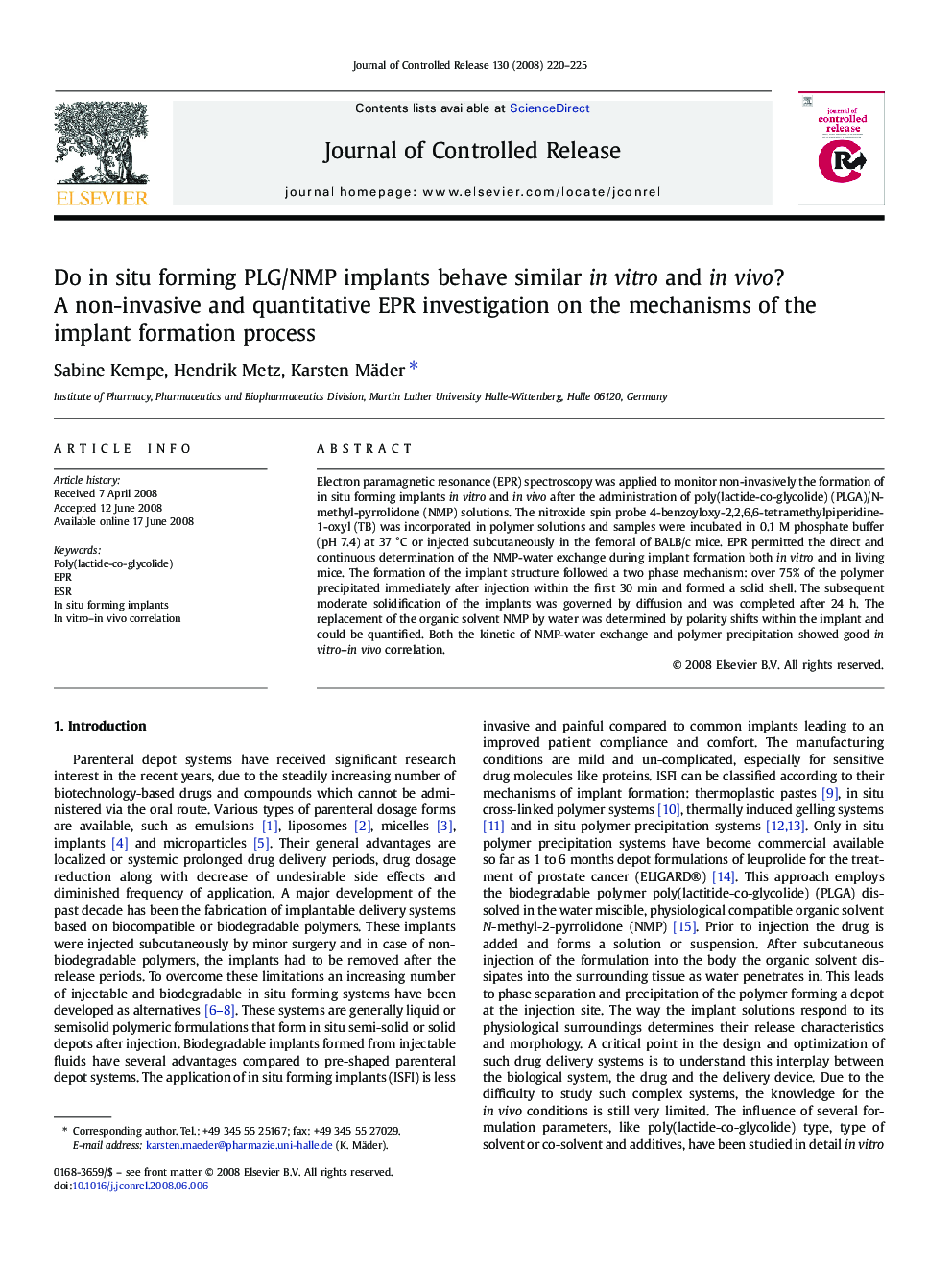| Article ID | Journal | Published Year | Pages | File Type |
|---|---|---|---|---|
| 1426741 | Journal of Controlled Release | 2008 | 6 Pages |
Electron paramagnetic resonance (EPR) spectroscopy was applied to monitor non-invasively the formation of in situ forming implants in vitro and in vivo after the administration of poly(lactide-co-glycolide) (PLGA)/N-methyl-pyrrolidone (NMP) solutions. The nitroxide spin probe 4-benzoyloxy-2,2,6,6-tetramethylpiperidine-1-oxyl (TB) was incorporated in polymer solutions and samples were incubated in 0.1 M phosphate buffer (pH 7.4) at 37 °C or injected subcutaneously in the femoral of BALB/c mice. EPR permitted the direct and continuous determination of the NMP-water exchange during implant formation both in vitro and in living mice. The formation of the implant structure followed a two phase mechanism: over 75% of the polymer precipitated immediately after injection within the first 30 min and formed a solid shell. The subsequent moderate solidification of the implants was governed by diffusion and was completed after 24 h. The replacement of the organic solvent NMP by water was determined by polarity shifts within the implant and could be quantified. Both the kinetic of NMP-water exchange and polymer precipitation showed good in vitro–in vivo correlation.
